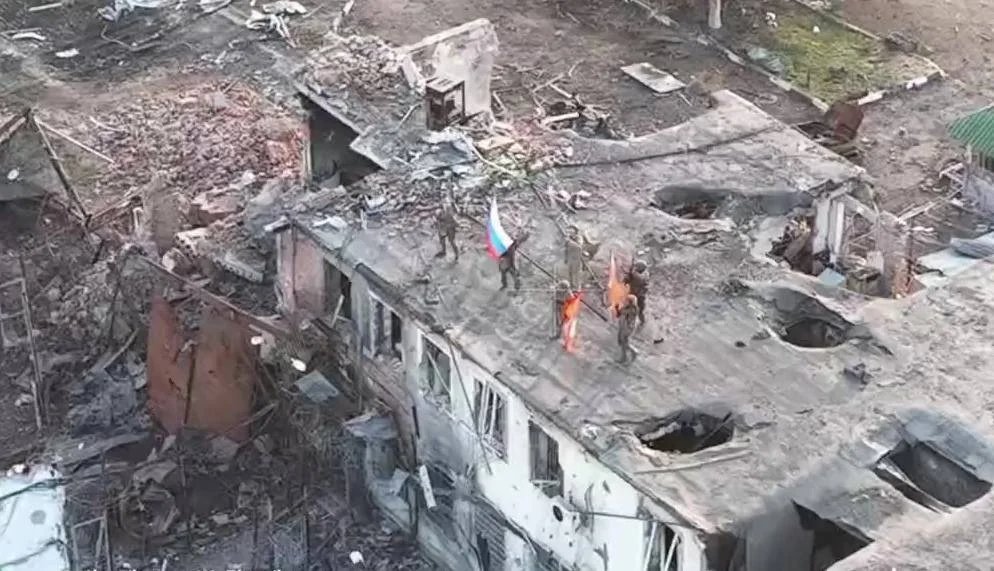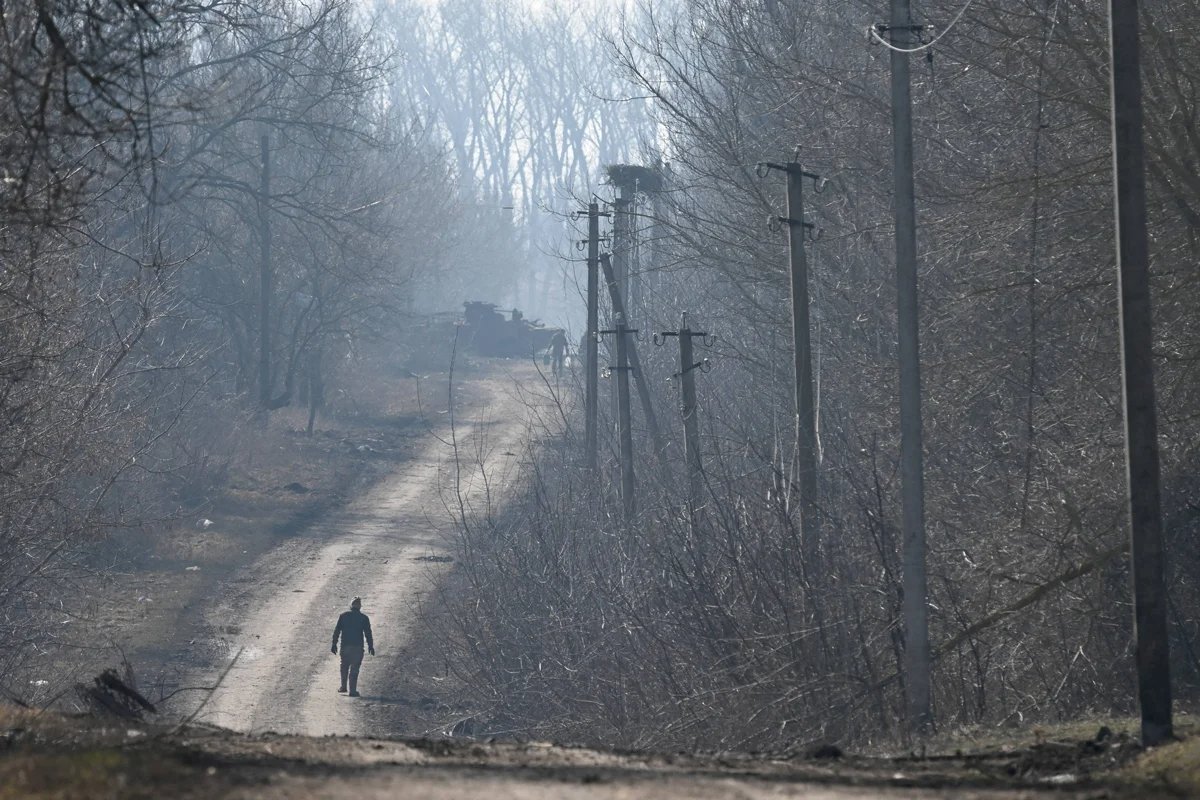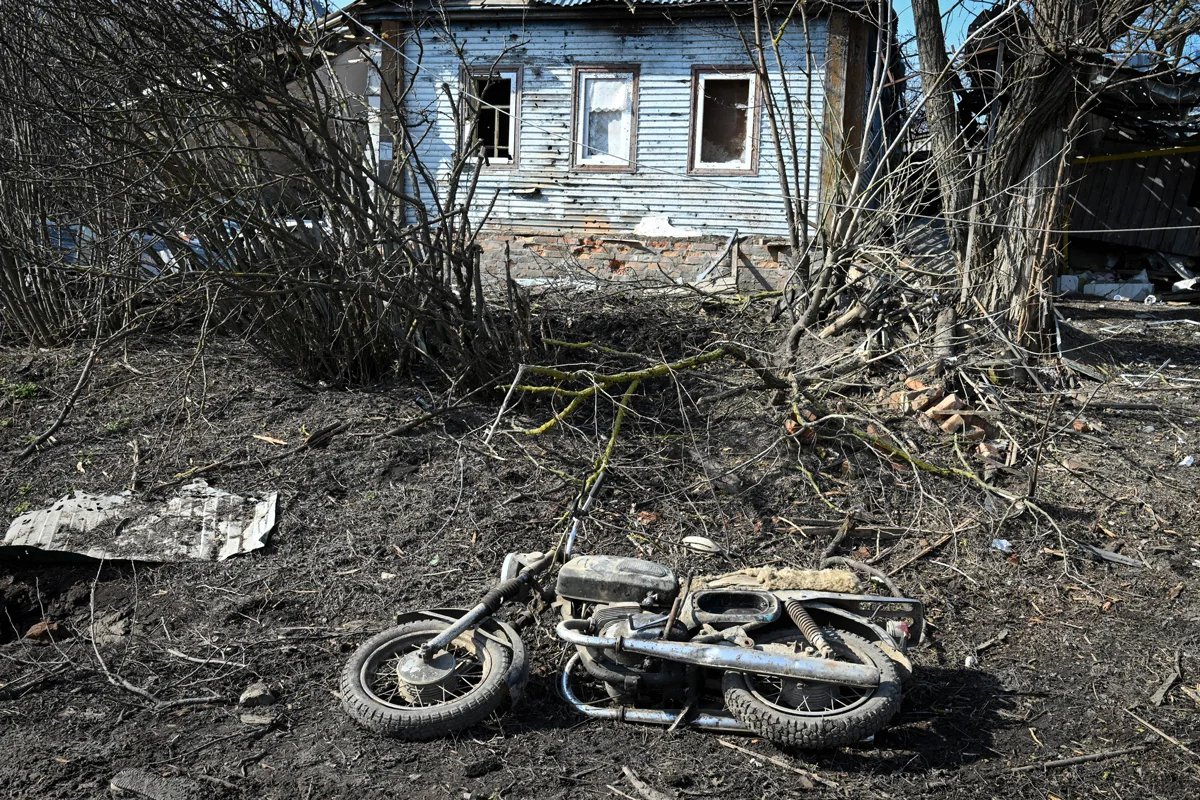The thousands of Ukrainian soldiers who have partially occupied a pocket of Russia’s western Kursk region since August have been at risk of encirclement by Russian troops since their supply route was effectively cut off. How is Kyiv’s bold operation on Russian territory likely to end?
The fog of war
On Monday, Russian state news agency RIA Novosti reported that some 800 Russian soldiers had entered Sudzha, the most significant population centre in the Kursk region under Ukrainian control, having seized the “industrial zone” on the city’s outskirts and were moving deeper into the city.
The Russian Defence Ministry claimed on Sunday that as well as recapturing seven Kursk region villages that had been under Ukrainian occupation for months, it had also seized the village of Novenke in Ukraine’s Sumy region, which borders the Kursk region directly, and from where the Armed Forces of Ukraine (AFU) launched its offensive in August.
These claims were denied by Colonel Andriy Demchenko, the spokesperson for Ukraine’s State Border Guard Service, in an interview with Media Center Ukraine, in which he said that the AFU were “using artillery and drones to prevent the enemy from gaining a foothold on our territory,” calling the area a “kill zone where Russians die".
Ukrainian project DeepState, which publishes constantly updated maps of the fighting in real time, also marks the villages as being under Russian control. Footage released on Sunday by the Russian military apparently shows drones attacking a convoy of Ukrainian troops leaving Sudzha.
“The Ukrainians risk being surrounded. They could number as many as 10,000, but some troops have apparently already been withdrawn.”
The offensive on Sudzha involved Akhmat special forces, an assault brigade, the 114th Separate Guards Motor Rifle Brigade, or Vostok Brigade, from the self-proclaimed Donetsk People’s Republic and other units. Akhmat commander Apti Alaudinov said on Saturday that “all units went on a large-scale offensive in all areas of the Kursk section of the front”.
One Russian military expert, who agreed to speak to Novaya Gazeta Europe on the condition of anonymity, said that the Russian military had already advanced significantly in the Kursk region and shrunk the Ukrainian bridgehead, leaving the AFU concentrated in Sudzha and a small area surrounding the town.
Crucially, the Russian army has been able to get within mortar-firing range of the highway that leads from Sudzha to the Ukrainian border, via which the AFU is resupplied, and which is now regularly targeted in Russian drone strikes, with burnt out AFU hardware littering the road.

Russian servicemen raise the Russian flag on a building in Malaya Loknya, Kursk region, 9 March 2025. Still from Russian Defence Ministry footage
New configuration
“DeepState has marked Sudzha as a grey area, but the AFU is still in control of the town,” Ukrainian military analyst Ivan Stupak told Novaya Europe. “The Ukrainian command is withdrawing some brigades from the bridgehead. The Russians have tried to cut off the only highway to Sumy, which supplied the AFU in the area. The Ukrainians risk being surrounded. They could number as many as 10,000, but some troops have apparently already been withdrawn. There is currently still a fairly wide corridor that would allow for relatively safe retreat. The Russian side, meanwhile, is saying that the Ukrainians are trying to lure them into a well-prepared ambush. So this really is the fog of war.”
According to Israeli military observer David Sharp, an aggregate of analyst estimates put Ukrainian troop numbers in the Kursk region at between 6,000 and 10,000, along with dozens or even hundreds of pieces of military hardware. Any attempt to withdraw either the troops or the hardware along roads that are being fired on is likely to be very difficult.
“If the front collapses, the Ukrainians will have to leave the Kursk region as quickly as possible.”
“After American assistance stopped, the AFU had to redeploy their offensive configuration in the Kursk region into a defensive one,” says military expert and reserve AFU colonel Roman Svitan. “To avoid the risk of encirclement, Ukrainian troops have taken up positions better suited to defence. Some AFU troops will likely take up position along the banks of the Sudzha River, which divides the town in two.”
“If the front collapses, the Ukrainians will have to leave the Kursk region as quickly as possible,” Sharp continued. “The AFU is now in a very difficult situation regarding logistics, and risks being cut off and the Russians are constantly shelling the only major highway supplying Ukrainian units.”
“It could be time to urgently withdraw all troops. Nor do we know the real result of the Russian troops coming through the gas pipeline. We don’t know whether all those who made it to the rear of AFU positions were taken out.”

Russian servicemen in the village of Novaya Sorochina, Kursk region, 9 March 2025. Photo: Stanislav Krasilnikov / Sputnik / Imago Images / SNA / Scanpix / LETA
Pipe dreams
On 8 March, the AFU General Staff said that Russian sabotage and assault groups had been using a part of the Urengoy-Pomary-Uzhhorod gas pipeline to secretly advance on Sudzha, but had been “found in time” and were being systematically “destroyed” by Ukrainian Airborne Assault Forces.
Alexander Khinshtein, the Kursk region’s acting governor, confirmed on Sunday that Russian forces had attempted to break through via the gas pipeline. “To avoid enemy drones, mines and equipment, Russian forces used a branch on the main gas pipeline that used to supply Europe with Russian gas via Ukraine,” Khinshtein said. “Not only couldn’t they move standing upright — walking bent down in uniform for a dozen kilometres! — but there was also a risk of poisoning, and they needed protective equipment.”
“Operation Stream took over three weeks to plan,” according to Vostok commander Zombie. “We all walked more than 15 kilometres through the pipe. Over 800 people in total went through in small groups over four days. The enemy didn’t expect our troops to be behind them, 15 kilometres from the front line.”
According to Stupak, the AFU was aware of the Russians’ exit point from the pipeline and Ukrainian troops lay in wait for them. The AFU General Staff published a video on Saturday appearing to show Russian soldiers being ambushed as they emerged from the pipeline.
While it has not been reported by either side how many Russian soldiers were killed in the ambush, Svitan says around 100 people had come to the surface from the gas pipeline and were killed by artillery fire.

Street view of the Novaya Sorochina village, Kursk region, 9 March 2025. Credit: Stanislav Krasilnikov / Sputnik / Imago Images / Scanpix / Lenta
War or politics
Stupak ascribes the AFU withdrawal from the Kursk region to the Trump administration’s termination of US military aid, adding that the US decision to also end intelligence sharing with Kyiv could leave it “blind” and “deaf”. Aware of this blind spot and wanting to exploit it, Russia launched its offensive in multiple parts of the Kursk region at once.
US military aid has also been invaluable to the Ukrainian troops tasked with occupying the region, supplying hardware such as tanks and infantry fighting vehicles, which are desperately needed for combat operations. However, as the US supply of spare parts and software is turned off, this equipment could be rendered useless.
“In the coming days, the Armed Forces of Ukraine will face the real possibility of defeat, on a scale even greater than the disaster in Mariupol in 2022.”
“For the first month and a half, the Ukrainian incursion into the Kursk region was a clear victory,” Stupak continues. However, he stresses that by standing still, Ukrainian forces failed to capture new areas and ultimately lost people and resources. Important Ukrainian strongholds elsewhere along the frontline essentially became donors, transferring valuable people and resources to the Kursk offensive, including the most modern Western equipment. As a result, Ukraine suffered defeats in other areas of the front, including in Donbas.
“It’s clear that the idea of exchanging Ukrainian-held areas of the Kursk region for Russian-occupied areas of Ukraine never really took off. I believe it’s high time Ukrainian units are withdrawn from this piece of Russian land,” Stupak says.
Sharp says that taking the decision to withdraw from the Kursk region is a very difficult one for the Ukrainian authorities, who had previously considered it a trump card to be used in eventual peace negotiations. However, he concedes that if the situation on the ground is rapidly deteriorating, saving lives should be Kyiv’s priority.
“In the coming days, the Armed Forces of Ukraine will face the real possibility of defeat, on a scale even greater than the disaster in Mariupol in 2022. As a result, thousands of Ukrainian soldiers may die or be captured. Volodymyr Zelensky must admit that it is not possible to keep the captured areas of the Kursk region until peace negotiations, and withdraw his people,” Sharp warned.
Join us in rebuilding Novaya Gazeta Europe
The Russian government has banned independent media. We were forced to leave our country in order to keep doing our job, telling our readers about what is going on Russia, Ukraine and Europe.
We will continue fighting against warfare and dictatorship. We believe that freedom of speech is the most efficient antidote against tyranny. Support us financially to help us fight for peace and freedom.
By clicking the Support button, you agree to the processing of your personal data.
To cancel a regular donation, please write to [email protected]

